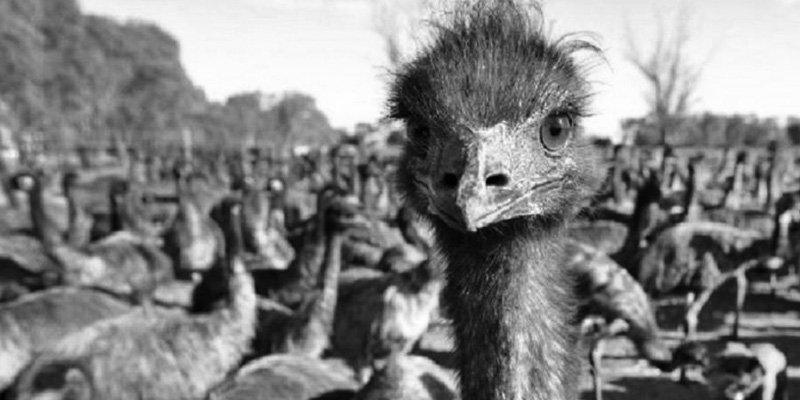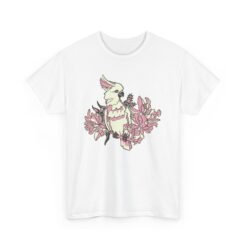History, Unkown History, Weird History
The Great Emu War of 1932: Australia’s Unlikely Conflict with Giant Birds
Background: The Rise of the Emu Population
In the aftermath of World War I, Australia experienced significant changes in its agricultural landscape, which inadvertently set the stage for a dramatic rise in emu populations. As returning soldiers sought to reintegrate into civilian life, many turned to farming as a means of sustenance and economic stability. The government facilitated this transition by offering land concessions, leading to an increase in the number of farms operating in previously undeveloped areas. Consequently, the combination of newly established farmland and changing agricultural practices created a favorable environment for emus to thrive.
The introduction of modern farming techniques further contributed to this boom. As farmers adopted more intensive cultivation methods and began to clear larger swathes of land, the natural habitats that emus relied upon diminished. The expansive fields of crops, particularly cereals, became highly appealing to these flightless birds, which are primarily seed-eaters. As a result, emus learned to take advantage of the cornucopia of resources provided by the grain fields, leading to an exponential increase in their numbers.
This surge in the emu population began to encroach upon farmland, posing a serious threat to agricultural production. Farmers found themselves facing not only the challenges of adapting to new farming methodologies but also the persistent nuisance of emus foraging through their crops. As these birds uprooted plants, trampled seedlings, and stripped fields bare, the economic distress for farmers became increasingly pronounced. The once harmonious coexistence between agriculture and wildlife began to fracture, leading to growing calls for intervention as the emu population’s rapid rise endangered the livelihoods of farming families across the countryside. Thus, the stage was set for what would later become a unique and unexpected conflict in Australian history.
The Government’s Response: Declaring War on Emus
In late 1932, faced with the burgeoning population of emus wreaking havoc on agricultural lands in Western Australia, the government recognized the urgent need for action. The emu invasion had escalated to such an extent that the farmers, particularly in the Campion district, were experiencing significant crop losses, leading to economic distress. In response, the Australian government made the unprecedented decision to declare war on these large birds, marking the beginning of a campaign that would be both unusual and controversial.
The declaration of war was not taken lightly; it was a reflection of the desperation felt by rural communities that found themselves outmatched by nature. Military personnel were deployed to devise strategies to combat the emus. Led by Major G.P.W. Meredith, the operation would employ military-grade equipment, including machine guns, in an attempt to control the situation. This decision illustrated the government’s commitment to protecting agricultural interests while simultaneously drawing attention to the absurdity of a military campaign against wildlife.
The use of soldiers in an agricultural conflict was met with mixed reactions from the public. While some supported the government’s initiative, believing that the military could restore order and protect farmers’ livelihoods, others viewed the war on emus as a farce. Reports of emus outsmarting soldiers and evading gunfire underscored the challenges faced in this unusual conflict, leading to humor and skepticism among citizens. The military’s efforts failed to yield the desired results, underscoring the complexities of human intervention in wildlife affairs and raising questions about the effectiveness of such measures. Ultimately, the Australian government’s response to the emu invasion highlighted the tension between agricultural needs and wildlife management during a period of significant environmental change.
The ‘Battle’ Begins: Military Engagements with Emus
The Great Emu War of 1932 is remembered not only for its unusual combatants but also for the various military engagements that took place during this bizarre conflict. When Australian farmers faced unprecedented destruction of crops by emus, the government deployed soldiers armed with machine guns to combat the feathered adversaries. The engagements, initiated near Campion in Western Australia, revealed the unexpected challenges soldiers encountered on the ground. Equipped with military weapons, these soldiers soon discovered that emus were surprisingly resilient and swift, often evading their efforts to quell the infestation.
As the troops began their operations, initial skirmishes illustrated the birds’ ability to withstand rapid gunfire. Troops encountered difficulties in their tactics; emus would often dash in unpredictable directions at high speeds, rendering the soldiers’ precision aim nearly futile. For instance, in one encounter, amidst the chaos, emus demonstrated a baffling knack for weaving through bushes and rolling away from incoming fire, which left soldiers in disbelief. Reportedly, during the first major assault, only a handful of emus were perceived as neutralized, a number that stood in stark contrast to the anticipated success of the military efforts.
Along the lines of absurdity, humorous anecdotes emerged from soldier accounts. One story recounts an incident where a group of soldiers strategically positioned themselves, only to be outsmarted by a flock of emus that approached from the rear. The soldiers’ reactions oscillated between frustration and hilarity as they found themselves unable to keep pace with the quick-footed birds. This stark juxtaposition of military protocol against the backdrop of nature’s stubborn inhabitants punctuates the surreal nature of the Great Emu War. Ultimately, this whimsical conflict serves as a testament to the unpredictability of both nature and the human efforts to control it.
The Outcome: A Humiliating Defeat and Its Legacy
The Great Emu War, which unfolded in 1932, ended with a humbling acknowledgment that the military efforts to control the emu population were largely ineffective. After several months of military operations involving soldiers armed with machine guns, it became increasingly clear that the emus had advantageously outsmarted their human challengers. Authorities ceased operations, recognizing that these large birds were not only resilient, but also adept at evading capture and destruction. The chagrin surrounding this outcome propelled discussions on the efficacy of military interventions in managing wildlife populations.
The repercussions of this peculiar conflict extended far beyond the immediate embarrassment faced by the Australian military. The failed attempts to manage emu numbers underscored the challenges of integrating modern agricultural practices with wildlife management strategies. For farmers in Western Australia, the realization that conventional means of pest control were inadequate forced a critical reassessment of agricultural policies and the necessity for more sustainable methods. This incident brought to light the need for a better understanding of eco-systems, leading to the development of alternative strategies to mitigate wildlife impacts on agriculture.
Moreover, the Great Emu War has since entered the annals of Australian popular culture, symbolizing both an unintended farcical episode and a lesson in humility. The narrative of man versus nature remains a recurring theme in historical discourse, often cited in discussions about human intervention in ecological matters. To this day, the event has become a source of irony and humor, reflecting the broader discourse on wildlife management strategies and the complexity of agricultural interactions with nature. As historians and scholars continue to delve into this unusual chapter, the lessons learned serve as a reminder of the enduring relationship between humankind and the wild.































